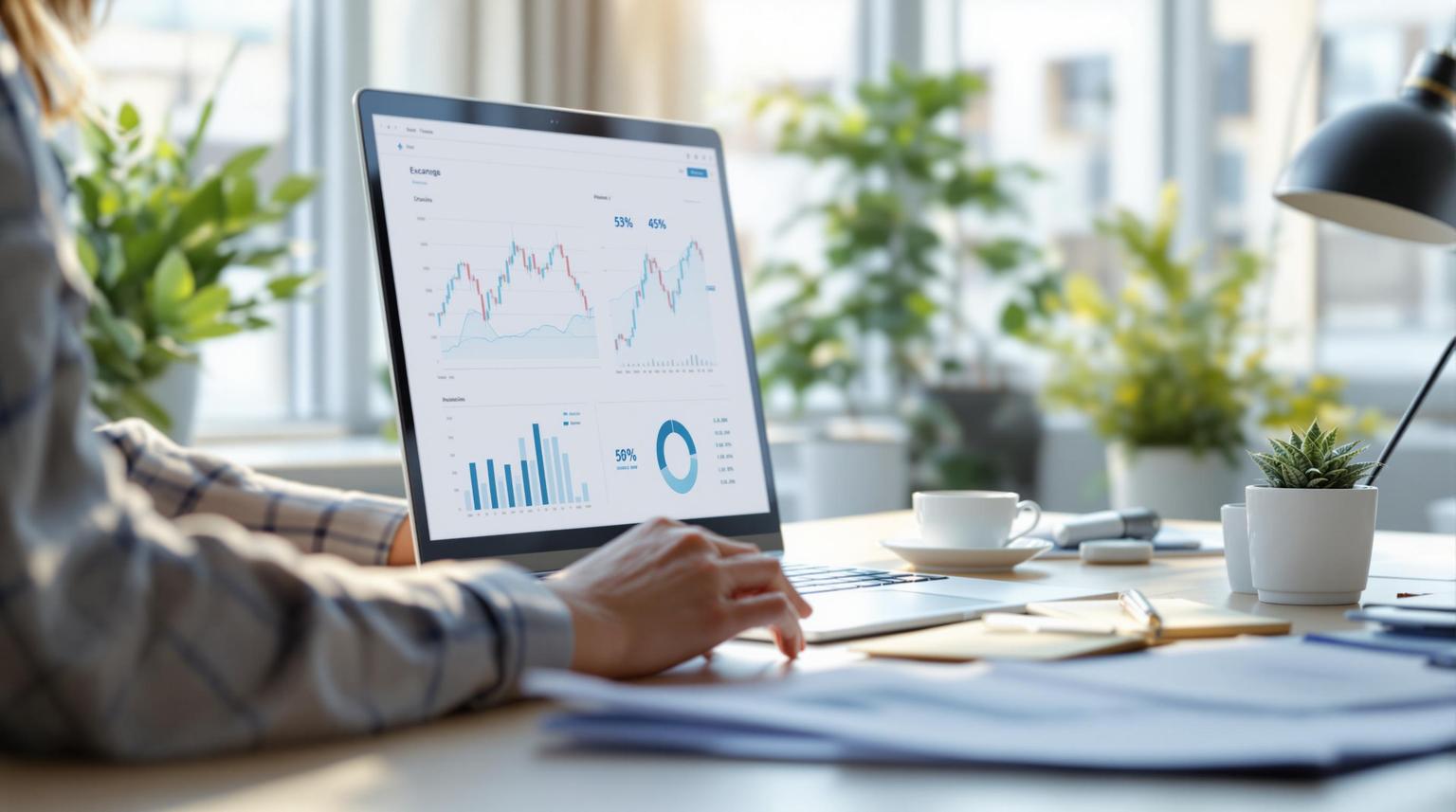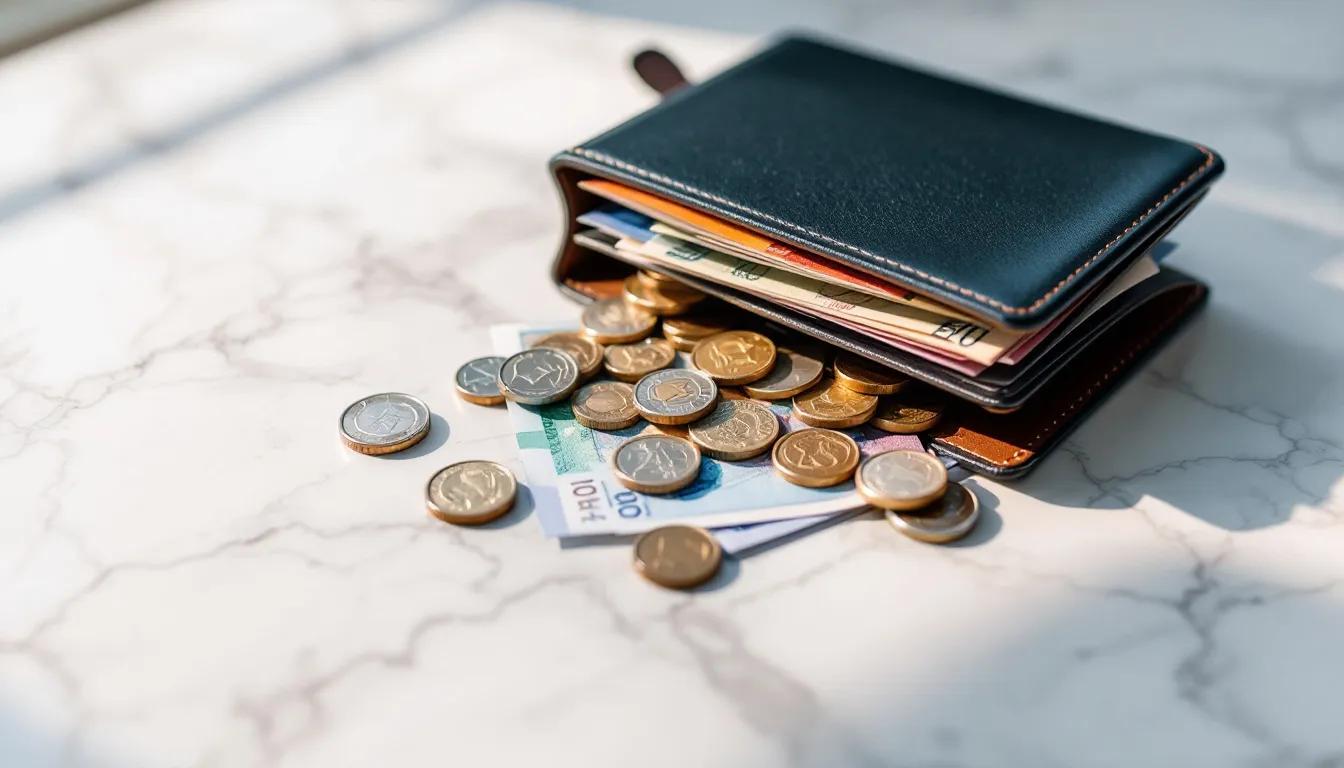Want to protect your business from currency market swings? Here's what you need to know about FX risk:
Foreign exchange (FX) risk hits your bottom line when currency values change unexpectedly. With $7.5 trillion traded daily in forex markets, understanding and managing this risk is crucial for any global business.
Key things to know:
| Risk Type | What It Means | Example |
|---|---|---|
| Payment Risk | Exchange rate changes between deal and payment | $50,000 deal becomes $55,000 due to rate shift |
| Financial Statement Risk | Currency shifts affect reported values | $100,000 profit shrinks to €86,000 when converted |
| Market Risk | Long-term currency trends impact business | Weak yen makes US products costlier in Japan |
How to protect yourself:
- Lock in exchange rates with forward contracts
- Use currency options for flexibility (if appropriate)
- Match foreign currency income and expenses
- Add FX clauses to contracts
- Spread risk across different currencies
Basic Elements of Currency Risk
Currency risk in FX markets comes from key factors that drive price changes. Let's break it down:
How Currency Prices Change
Currency prices move based on supply and demand. These shifts can happen fast due to:
- Economic news
- Political events
- Market mood
Take the yen in 2022-2023. Japan's negative interest rates made it weak, hitting 20-year lows against major currencies.
Main Risk Factors
Here's what really moves the needle:
1. Interest Rates
Higher rates often make a currency stronger. Why? They attract foreign money.
In 2023, Mexico's 11.25% rates vs. the US's 5.5% had a big impact on USD/MXN rates and hedging costs.
2. Inflation
High inflation? Expect a weaker currency. It affects buying power and investment returns.
3. Trade Balances
Export more than you import? Your currency might get stronger.
4. Political Stability
Shaky politics can tank a currency fast.
5. Economic Performance
Strong economy usually means a strong currency.
Tools to Measure Risk
Companies use these to figure out their risk:
| Tool | What It Does | When to Use It |
|---|---|---|
| Value at Risk (VaR) | Estimates possible losses | For overall portfolio risk |
| Sensitivity Analysis | Shows how rate changes affect finances | For specific transactions of your full portfolio |
| Stress Testing | Simulates market extremes | To prep for worst cases |
| Historical Analysis | Looks at past currency moves | To spot patterns |
These tools help businesses put a number on their risk and decide how to hedge.
Example: A US company selling lots in euros might use VaR to calculate potential losses if the euro drops. This could help them decide on using forward contracts or options.
Getting these basics down is key for any business in global markets. Know what moves currencies and how to measure risk, and you're better set to handle exchange rate swings.
How to Measure FX Risk
Companies dealing with multiple currencies need to measure their FX risk. Here are two main approaches:
Numbers and Calculations
Value at Risk (VaR) is a go-to tool for measuring FX risk. It shows potential losses over a specific time.
Here's a simple 1-day VaR calculation for a single currency pair:
1-day VaR = daily change x 2.33 (99% confidence)
Example:
| Position | Currency Pair | Daily Volatility | 1-day VaR |
|---|---|---|---|
| 1000 | EUR/USD | 0.5% | $13.96 |
This means there's a 99% chance the loss won't top $13.96 in one day.
Oku Markets uses VaR to calculate its clients’ currency risk across multiple currencies and across different time horizons. Ask for our advice today!
Companies use VaR to:
- Test scenarios
- Assess new position risks
- Guide hedging strategies
Market Analysis
Numbers aren't everything. Market analysis fills in the gaps.
Key factors to watch:
- Economic indicators
- Political events
- Global trade patterns
For example, a U.S. manufacturer exporting to Japan should track:
- U.S.-Japan trade relations
- Bank of Japan interest rate decisions
- Yen performance vs. major currencies
Ways to Handle FX Risk
Companies working with multiple currencies need smart ways to manage foreign exchange risk. Here's how businesses can protect their finances from currency swings:
Business Methods
1. Natural Hedging
Match your foreign currency ins and outs. An American company selling in Canada? Pay Canadian suppliers with Canadian dollars.
2. Invoice in Home Currency
When you can, use your own currency. It shifts the exchange risk to others.
3. Contract Clauses
Add foreign exchange clauses to long-term contracts. It's a safety net for big shifts.
4. Hedging
Using financial tools to lock-in exchange rates should be the final step if you can’t otherwise shift, match, or net your currency exposure!
Financial Tools
1. Forward Contracts
Lock in future exchange rates. Here's an example:
| Contract Type | Amount | Current Rate | Forward Rate | Expiry |
|---|---|---|---|---|
| EUR/USD Buy | €1,000,000 | 1.1800 | 1.1850 | 3 months |
This contract lets you buy €1 million at 1.1850 in three months, no matter what the market does.
2. Currency Options
Buy the right (not the obligation) to exchange at a set rate. It's flexible but costs more, and might not be appropriate for you. Seek advice!
3. FX Swaps
Swap currency amounts at fixed rates on specific dates. Great for multi-country operations.
sbb-itb-6b3a4a4
Setting Up Risk Management
Let's talk about setting up a solid FX risk management system. It's not rocket science, but it's crucial.
Making Risk Rules
First, you need clear FX hedging policies. Here's what they should cover:
- When to hedge
- How much to hedge
- How much risk you're okay with
For example:
| Time | Hedge |
|---|---|
| 0-3 months | 75% |
| 3-6 months | 50% |
| 6-12 months | 25% |
This way, you're not putting all your eggs in one basket.
Next, set a budget rate. It's like a safety net for your financial planning. If EUR/USD is at 1.18, maybe set your budget at 1.15. Better safe than sorry, right?
Now, track your FX exposure:
- Forecast your cash flow
- Figure out your net exposure across currencies
- Don't forget about hidden exposures
Checking Progress
Keeping an eye on things is key. Here's how:
- Regular check-ins: Monthly or quarterly, whatever works for you.
- Use Value at Risk (VaR): It's a fancy way of saying "how much could we lose?" For example, a $3M VaR means you're unlikely to lose more than that in a month.
- Watch the market: Keep your finger on the pulse of economic and political events.
- Stay flexible: As your business changes, so should your strategy.
- Get the big picture: Create reports that show everything in one place - your policy, rates, exposure, and transactions.
FX Risk in Action
Company Examples
Let's look at how real companies deal with FX risk:
Apple's Pricing Strategy
Apple, with 64% of revenue from international sales, had to adjust prices due to currency changes:
- Canada: iPhone 6s Plus price up by $60 CAD
- Australia: Price increase of $80 AUD
- Europe: iPhone 6s priced 40 euros higher than before
But in China? Apple kept prices steady at 5,288 yuan, despite yuan exchange rate shifts.
Newgen Distribution's Hedging Win
Newgen Distribution, a Northern European tech distributor, started FX hedging in 2019. Smart move. During Covid-19, they dodged exchange rate losses of up to 10%.
Investment Protection
Investors use these tricks to guard against currency risk:
Forward Trades
Picture this: A British furniture maker exports to the EU. They use forward trades to lock in exchange rates.
Example:
- Order value: €1,000,000
- Expected GBP: £870,000 (at 0.87 EUR/GBP)
- If rate drops to 0.846 GBP: Only £846,000 received
- Forward trade saves: £24,000
What's Next in FX Risk
New Tech Tools
The forex market is changing fast. AI and machine learning are leading the charge, offering smarter ways to handle currency risk.
What can AI do now?
- Crunch massive data sets in seconds
- Spot market trends humans might miss
- Make split-second trading calls
Some AI tools can even predict future cash flows with scary accuracy. This helps companies craft better hedging strategies.
MillTechFX's CEO, Eric Huttman, says fund managers are rethinking their FX hedging due to economic uncertainty.
Automated hedging is also taking off. These AI systems can pivot on a dime, offering more flexible protection than old-school methods.
Key Takeaways
FX risk management is crucial in currency markets. Here's what you need to know:
FX Risk Types
There are three main types:
- Transaction risk
- Translation risk
- Economic risk
Each affects a company's finances differently. Take transaction risk: An American company buying €50,000 of equipment from Spain might pay $55,000 instead of $50,000 if the dollar weakens.
Managing Risk Effectively
To handle FX risk:
- Set clear goals
- Track invoices against real-time rates
- Create a formal policy
- Keep an eye on FX rates and trends
Hedging Techniques
Hedging protects against bad currency moves. Popular methods:
- Forward contracts
- Options
- Currency swaps


